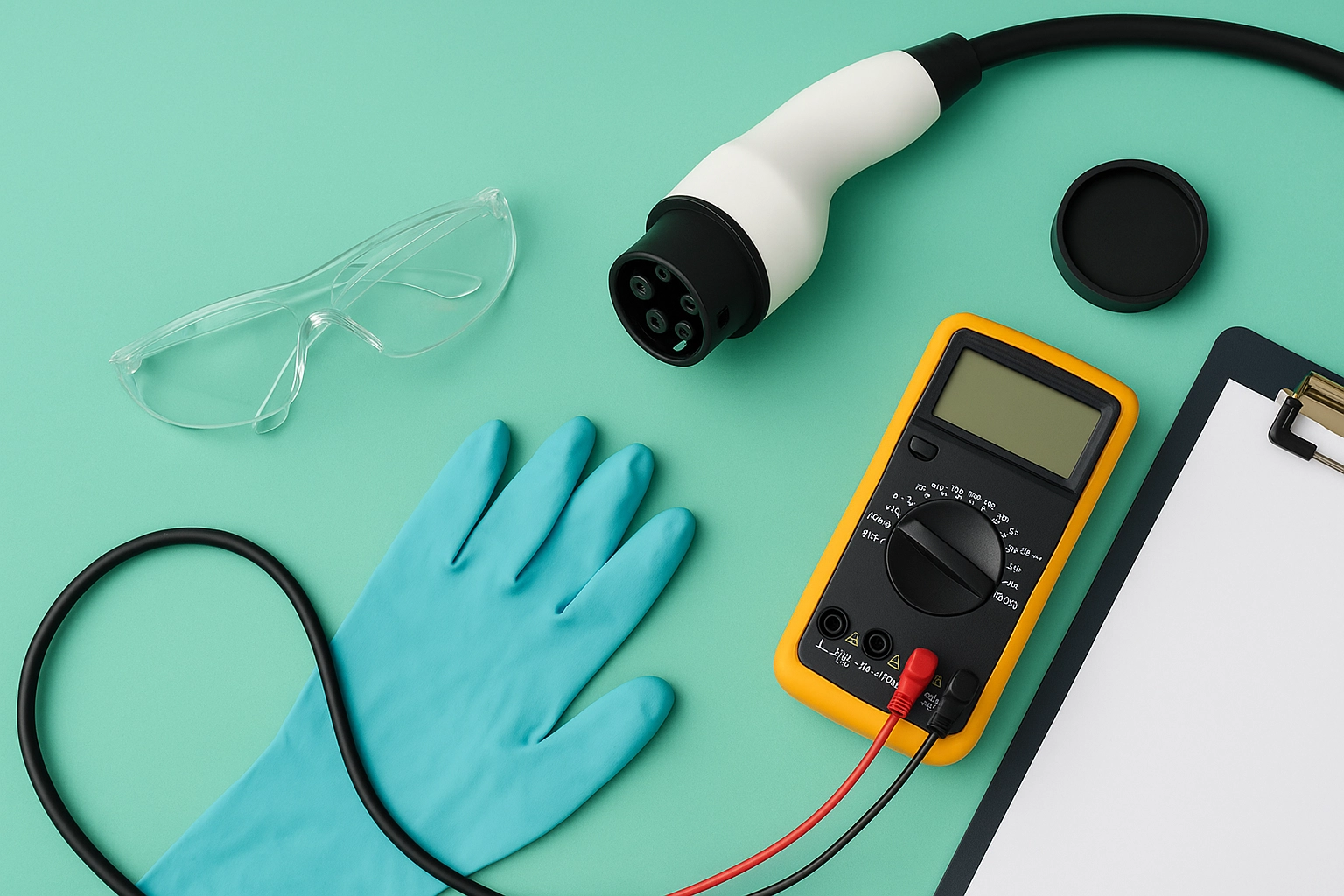NEMA WD6 Wiring Devices for EV Charger Testing
The NEMA WD6 standard is a critical component in the development and certification of electric vehicle (EV) charging equipment. This standard ensures that all EV charging solutions are interoperable, which is essential to facilitate widespread adoption and seamless user experience.
Developed by the National Electrical Manufacturers Association (NEMA), the WD6 standard specifies the physical connection between an EVSE (Electric Vehicle Supply Equipment) and the vehicle itself. This includes the wiring devices that plug into the charging port, which are designed to ensure safe and reliable power transfer.
The testing of NEMA WD6 wiring devices for EV chargers is crucial in ensuring compliance with both national and international standards. This testing helps manufacturers verify that their equipment meets the safety requirements set forth by regulatory bodies such as the International Electrotechnical Commission (IEC), American Society for Testing and Materials (ASTM), and others.
Compliance with these standards is not only a legal requirement but also a key factor in gaining market acceptance. By adhering to stringent testing protocols, manufacturers can ensure that their products are safe, reliable, and compatible with existing infrastructure. This article will explore the various aspects of NEMA WD6 wiring device testing, including applied standards, benefits, quality assurance measures, and frequently asked questions.
The testing process for NEMA WD6 devices involves several key parameters. These include insulation resistance, mechanical strength, temperature cycling, and electrical continuity. Each parameter is crucial in ensuring that the device can withstand the rigors of regular use while maintaining its integrity and functionality over time.
Insulation resistance tests are conducted to verify that there is no unwanted current leakage from the charging port. This ensures that the device remains safe for both users and equipment. Mechanical strength tests assess the ability of the wiring devices to endure physical stress, such as bending or vibration, without compromising their structural integrity.
Temperature cycling tests simulate real-world conditions by exposing the device to extreme temperatures. This helps manufacturers identify any potential weaknesses that could lead to failure in hot and cold environments. Electrical continuity tests ensure that there are no breaks or interruptions in the electrical circuit, which is essential for reliable power transmission.
Applied Standards
| Standard | Description |
|---|---|
| NEMA WD6 | The standard specifies the physical connection between an EVSE and a vehicle, including wiring devices that plug into the charging port. |
| IEC 62196-3 | Covers the electrical and mechanical characteristics of the coupling systems for electric vehicles. |
| ASTM D7850 | Provides guidelines for testing connectors used in electric vehicle charging applications. |
| EN 62196-3 | The European counterpart to IEC 62196-3, providing similar requirements for coupling systems. |
Benefits
Compliance testing of NEMA WD6 wiring devices offers numerous benefits to manufacturers and users alike. Firstly, it ensures that products meet the highest safety standards, thereby protecting consumers from potential hazards. Secondly, compliance with these standards enhances interoperability between different EV charging systems, promoting seamless integration into existing infrastructure.
Secondly, testing helps identify any design flaws or manufacturing defects early in the development process, allowing for timely corrections and improvements. This not only improves product quality but also reduces costs associated with post-market recalls and repairs.
Thirdly, adherence to these standards fosters confidence among consumers by demonstrating a commitment to safety and reliability. This can lead to increased market share as customers are more likely to choose brands that prioritize safety and compliance.
Finally, testing supports regulatory requirements and international certifications, simplifying the process of exporting products to various markets around the world. By ensuring compatibility with global standards, manufacturers can expand their reach beyond domestic sales into foreign territories.
Quality and Reliability Assurance
- Inspection and verification of raw materials to ensure they meet specified quality levels.
- Regular calibration of testing equipment to maintain accuracy throughout the testing process.
- Implementation of a strict quality control program that includes both internal audits and third-party inspections.





